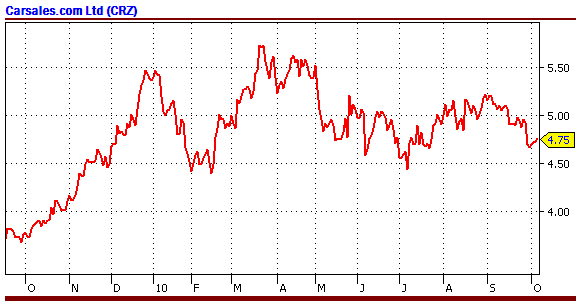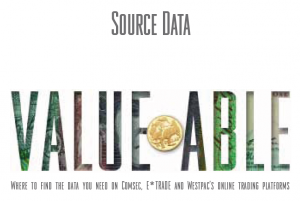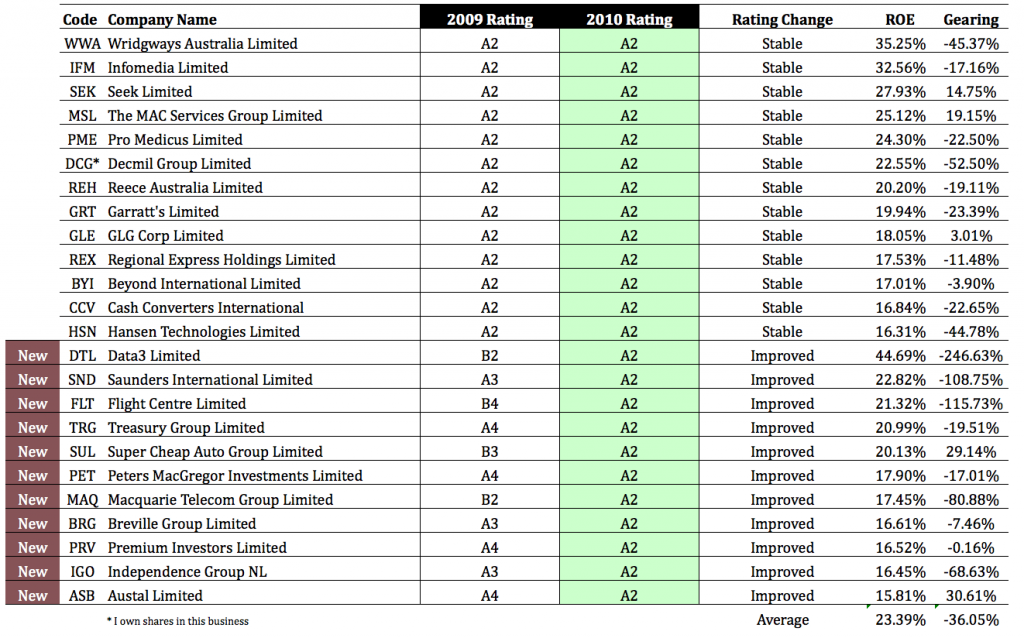Companies
-
Is that the Second Edition of Value.able?
Roger Montgomery
November 19, 2010
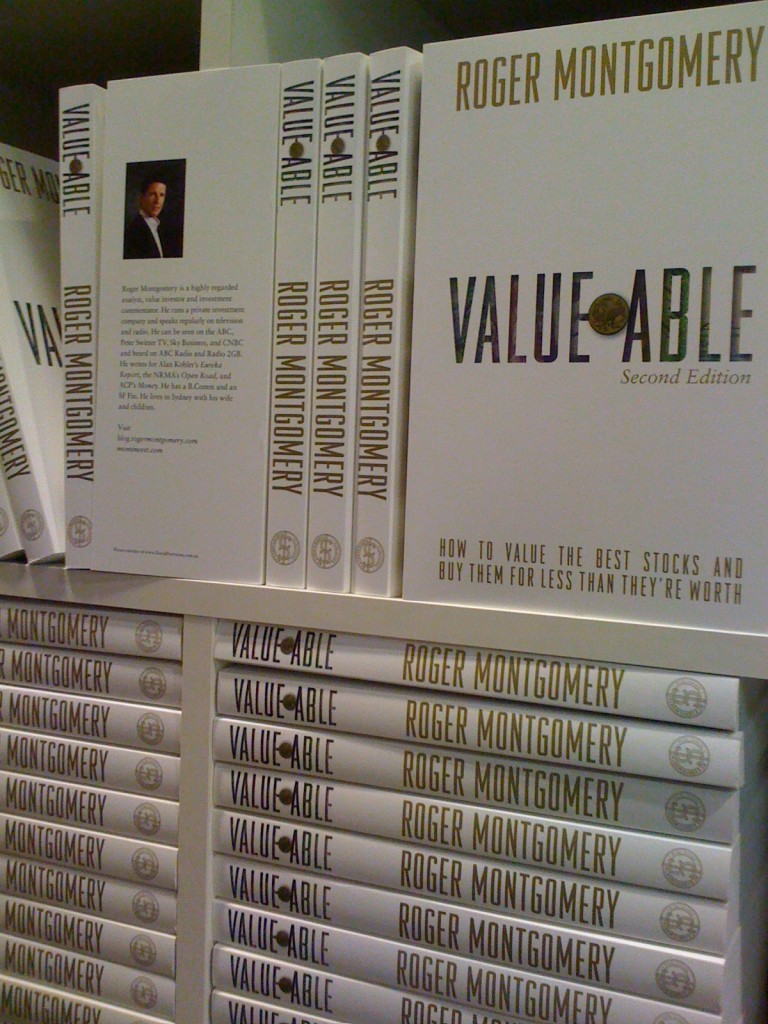 Walking into the stores of some of my ‘A1’ MQR companies lately, it is clear that Christmas is just around the corner. Here at Montgomery Inc, Value.able Second Edition has just arrived.
Walking into the stores of some of my ‘A1’ MQR companies lately, it is clear that Christmas is just around the corner. Here at Montgomery Inc, Value.able Second Edition has just arrived.At under $50, Value.able is not only easy to wrap, it’s the gift that keeps on giving all year round (and you don’t have to brave the local shopping centre)!
Many First Edition Graduates have asked me the question “what’s new in the Second Edition?” Aside from an added Appendix, the Second Edition contains all the information of the First Edition that had such a positive impact on people like Graham, who wrote;
“I’m somewhat of a minimalist and love it when I get a book where it makes me feel like I can throw away all the other books I have on a subject – this is such a book!!”
Value.able Second Edition is $49.95. The price includes GST and postage to anywhere in Australia (allow 7 business days). You may be able to claim a tax deduction, although you’ll probably want to check.
Visit my website to purchase your copy. And after reading it, please share your thoughts about Value.able, at Leave a Comment here at the blog.
Posted by Roger Montgomery, 19 November 2010
by Roger Montgomery Posted in Companies, Investing Education, Value.able.
-
Have you been getting your daily dose?
Roger Montgomery
November 9, 2010
 If only it worked that well all the time!
If only it worked that well all the time!Last Thursday evening (4 November) on Peter’s Switzer TV I listed, amongst other companies, Credit Corp and Forge Group as two I would have in the hypothetical Self Managed Super Fund Peter challenged me to set up that day.
Why did I nominate CCP and FGE? Both receive my A1 or A2 MQR and both have been trading at a discount to their intrinsic value.
If you are a regular reader of my blog you would have read my insights for some months on these companies. And if you saw today’s announcements, you can imagine why I am a little happier than usual.
Credit Corp’s previous 2011 NPAT guidance was $16-$18 million. Today the company announced FY11 would likely produce an NPAT result of $18-$20 million.
Forge Group’s announcement states “The Board wishes to advise that the company forecasts net profit before tax for the half year ending 31st December 2010 to be in the range of $25-$27 million. This represents an improvement on the previous corresponding period (pcp $19.04m) of up to 42%.”
As I fly to Perth for a presentation and company visit, I am encouraged that several of the companies Value.able graduates mentioned in our lists are also hitting new 52-week highs. In a rising market that lifts all boats, it is perhaps unsurprising, but nevertheless it should be an encouragement to Value.able graduates and value investors that companies like FLT, DCG, MIN, FWD, FGE, CCP, NCK, DTL, MCE, MTU and TGA have all hit year highs – some of them yesterday. More importantly those prices are perhaps justified by their intrinsic values.
Of course I am not here to predict where those prices will go next, because I simply don’t know. Short-term prices are largely a function of popularity and the market could begin a QE2-inspired correction, an Indian infrastructure-inspired bubble or a China liquidity-inspired bubble tomorrow. I have no way of telling and instead, I focus on intrinsic values and only pay cursory attention to share prices.
So, as I always say, seek and take personal professional advice before taking any action and remember that 1) I don’t know where the share price is going 2) I am under no obligation to keep you up-to-date with my thoughts about these or any company, my Montgomery Quality Ratings or my valuations and I might change my views, values and MQRs at any time so don’t rely on them and 3) I may buy or sell shares in any company mentioned here at any time without informing you.
And so I remind you one more time. Please seek and take personal professional advice and always conduct your own research.
Posted by Roger Montgomery, 9 November 2011.
by Roger Montgomery Posted in Companies, Insightful Insights, Investing Education, Value.able.
-
Are you drowning in a sea of complexity?
Roger Montgomery
November 3, 2010
 I don’t know if you have noticed but some of my recent posts and comments have been getting a little technical. I am sorry about that, I get a bit carried away sometimes.
I don’t know if you have noticed but some of my recent posts and comments have been getting a little technical. I am sorry about that, I get a bit carried away sometimes.Of course on this blog, I am not alone. Joab’s brilliant heads-up on the forthcoming changes to the treatment of leases and the impact on the financial statements is exactly the sort of thing that excites those of us who make investing a full time occupation.
In this field it’s easy to want to prove how much detail one can accumulate about a company or what one knows about valuations or credit analysis. Then of course debates and polite but pointed arguments begin about whose mousetrap is better.
Yet for most of us, it’s a storm in a tea cup, and meanwhile someone has made a million dollars quietly accumulating a few shares in the recently listed company XYZ Ltd.
In most cases there is one pearl that counts and the rest is noise. Our job is to find the pearls. Of course with so much rubbish to sift through it can be challenging to pluck up the enthusiasm to even start searching. For many investors, time is of the essence and short cuts are needed.
Well, I am here to deliver. But this not a post about buying the next hot uranium or gold explorer – tips I do receive and some I even regret missing sometimes. Today’s post is about a shortlist of A1 companies, their proximity to intrinsic value, my expected change in those intrinsic values and the associated net debt to equity ratios.
Why? It’s about getting back to basics.
Investing is simple. Not easy, but simple. Much work went into the classification process to come up with my A1, A2, C5, etc Montgomery Quality Ratings using, for example, industry specific KPI’s to ensure that future sweat was reduced.
And recently one Value.able Graduate Ken, reinforced my resolve to keep it all very simple. Ken D wrote:
Hi again Roger,
Out of curiosity, last week I constructed 2 hypothetical portfolios: 1) with your A1 stocks in equal proportion; and 2) the same with your A2 stocks. I have attached some numbers. I was impressed by the average past performance (i.e. investment performance) from both portfolios and also noted quite a difference between the A1 and A2 portfolios (attached). I doubt whether the result is fortuitous. Without asking you to outline your ranking process, I was wondering whether the strong past performance might be expected as a direct result of criteria used in the A1, A2 classification process – e.g. reference to historical earnings growth for instance, or perhaps more interestingly, a product of the inherent quality of the business as measured by current performance measures.
Ken
In answer to Ken’s question and for everyone’s benefit, remember Ben Graham’s quote about short-term voting machines and long-term weighing machine? Over longer periods of time, price follows intrinsic value and because my Value.able method of calculating intrinsic value is related to the performance of the business, one should expect price to follow performance. Over time A1 businesses should do better and a portfolio filled with just A1s purchased at big discounts to intrinsic value, should, in theory, do best.
Ken looked at all the A1s that I had mentioned on the blog and went backwards (I’ll ignore survivor bias for now) to have a look at the annual returns a portfolio of A1s would have produced.
While there is more refinement required, the early results are impressive. Over the last ten years Ken’s portfolio of 16 A1 company stocks returned 24 per cent, per annum. The same 24 per cent per annum result was produced with a portfolio of 23 stocks over five years and there were 31 A1 stocks in the last year that combined, returned 31 per cent.
Thanks for putting in the time Ken.
With all that in mind, here is my latest list of A1 companies, their proximities to intrinsic values and a few other salient stats.
What I would like to see as comments here are your thoughts or insights about any of these companies. Go right ahead and share whatever you know or think. But only about the companies in the list. Keep the comments to the topic set and we will build a useful library of insights. Just click the Leave a Comment link below.
Posted by Roger Montgomery, 3 November 2010.
by Roger Montgomery Posted in Companies, Investing Education, Value.able.
-
Is cash made from Sandalwood?
Roger Montgomery
October 28, 2010
 A number of Value.able Graduates have asked me to share my view on TFS Corporation Ltd (ASX:TFC), the owner and manager of Indian sandalwood plantations in the east Kimberley region of Western Australia (an area I have visited and can’t wait to get back to).
A number of Value.able Graduates have asked me to share my view on TFS Corporation Ltd (ASX:TFC), the owner and manager of Indian sandalwood plantations in the east Kimberley region of Western Australia (an area I have visited and can’t wait to get back to).The first comment is from SI:
“I just had a look at TFS… wow is all I can say. I agree this is a monopoly in the making. They have control over customers with many signing up to a % of production years in advance and $$ to be set at point of sale. There appears to be medical interest developing, significant cosmetic and industry demand and cultural/religious needs not wants. So demand is very strong and lacking substitutes. On the supply side I see world supply is dwindling and TFS is really the only viable source – also natural/sustainable and green! There also appears to be huge barriers to entry for any competition and TFS is 15 years ahead of any rivals! So using Porters 5 forces: they have power over customers, power of suppliers, no realistic substitute, huge barriers to entry and a monopoly position… WOW they are also vertically integrated soil to end product! Also trading on a PE of approx 5, making money now growing trees, paying a dividend and yet to benefit from revenue from harvest….which appears to offer huge revenue flows starting in 2 years.”
And from James:
“… Their ROE is good, payout low and currently well under value.”
Putting aside the more than slight promotional tone of SI’s comments – thanks SI, it appears on first blush that TFS has several things going for it: bright prospects, possible competitive advantages, high levels of profitability and a valuation greater than the current price. Thanks SI for openly sharing your thoughts on the business.
To add my two cents worth, it would be useful to revisit a very important chapter of Value.able: Cashflow and Goodwill. I fear its importance may have been overlooked by readers. There are been precious few questions about, or discussion, of cashflow at my blog, even though it occupies a very large part of my time analysing companies. For TFS, in the current stage of its lifecycle, this chapter has many considerations for investors to take on board before jumping onto the Sandalwood bandwagon.
Let me start on page 147, third paragraph, bold font: “The cashflow of a company that you invest in must be positive rather than negative”. The reason I have emphasised this statement is because I want to make something very clear – reported accounting profits often bears little resemblance to the cash profits or cashflow of a company.
In business you can only spend cash. Indeed, cash is ‘king’. Try going to the local grocer, showing him an empty wallet and offering instead some accounting surplus to pay for the weeks fruit and veg. You will get just as far in business without real cash – unless the business has access to external funding to plug the gap. Please make sure you re-visit Chapter 9 of Value.able.
With re-reading from page 145 in mind, focus your attention to the profits and operating cash flows reported by TFS in 2009 and 2010.
TFS has not generated a single dollar of cumulative positive cash flow in the past two years. Despite reporting $72m in profits, TFS actually experienced a cash outflow of -$8.9m. In 2010, a record $37.11m in profits is matched by negative operating cash flows of -$25.09m. Remember page 147, third paragraph, bold font?
It could however be that the cash flow disparity is merely a timing issue. No problem; a longitudinal study will help. Turning our attention to the past 10 years, is the situation any better?
Total reported profits over this period equate to $141.36m, but this is money TFS cannot spend. The total of operating cash flows produced over the same period, money the business can spend, is significantly lower at $22.91m.
What if I now told you that over the same 10 years, the business had spent $77.43m on investments including property, plant and equipment, and paid $29.94m in dividends!
And all this from Cash Flow of only $22.91m? This is generally only achievable if a business has very accommodating shareholders and financiers – who, to date, have tipped in $61.14m in equity and $43.19m in debt to plug the hole.
Does this business meet Chapter 9’s description of a Value.able business?
Extraordinary businesses don’t have to wait for cash flow. Their already-entrenched competitive position ensures that cash flows readily into management’s hands to be re-deployed/re-invested (with shareholders best interests at heart), or returned.
TFS and many other businesses listed on the ASX are able to utilise various accounting standards to depict the appearance of a profitable business when they are in actual fact heavily reliant on external financing to fund and grow operations.
I am not saying in any way, shape or form that TFS is a business that will head down the same path as many in the sector before it – remember Great Southern Plantations and Timbercorp? TFS may soon produce fruit (so to speak). And if SI and management are right, the business offers “huge revenue flows starting in 2 years”, is a “monopoly in the making” and 2011 will see a significant increase in positive operating cash flow as settlement of institutional sales occurs throughout the year. If this occurs, the business may achieve an investment grade Montgomery Quality Rating (MQR).
I prefer to see runs on the scoreboard – a demonstrated track record – and profits being backed up by uninhibited cash streaming through the door before I open my wallet. Yes, one will miss opportunities adopting this approach but those fish you do catch are generally very good eating.
So until such time as TFS’s cash starts to flow, there are other cash-producing listed A1 businesses to choose from.
This brings up an important point to consider; make sure reported profits are backed up by cash flowing into the business. If it isn’t, be very conservative in your assumptions. Better still, move on to valuing businesses that are extraordinary, those with an MQR of A1, A2 and B1. TFS is a B3.
I will watch this one from the sidelines for now, even if I miss out on returns in the meantime.
Posted by Roger Montgomery, 28 October 2010.
by Roger Montgomery Posted in Companies, Energy / Resources.
- 78 Comments
- save this article
- POSTED IN Companies, Energy / Resources
-
Is one man’s trash another man’s treasure?
Roger Montgomery
October 25, 2010
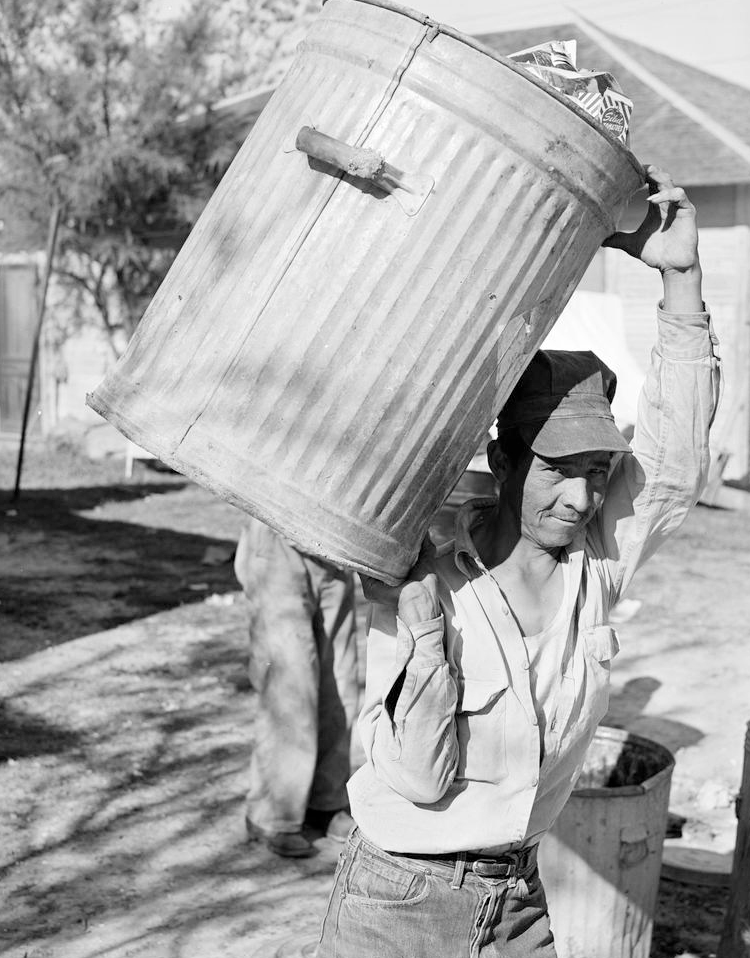 I am writing this post so that we have a record in the event Private Equity some day offers to offload the business to me. It’s one for those of you who have ever been to the local tip and paid for the privilege.
I am writing this post so that we have a record in the event Private Equity some day offers to offload the business to me. It’s one for those of you who have ever been to the local tip and paid for the privilege.It has been reported this week that Visy, the German-based waste group Remondis, Sydney-based Sita Environmental Solutions, private equity groups Ironbridge and Archer as well as listed disappointment Transpacific are all eyeing off garbage collector and tip owner WSN Environmental Solutions.
If you happen to live on Sydney’s north shore and ever had the delightful job of taking a trailer load of rubbish to the tip, you may be familiar with their North Ryde facility at Wicks Road. Drive onto the weigh bridge and over your credit card, go and dump your rubbish and unwanted items, get reweighed and both your car and your credit card are lighter. Ask the ladies at the entry which is the busiest day and they will gladly report; “every day, its always busy here”.
There are huge competitive advantages inherent in approved waste dump sites in high density areas. Environmental regulations ensure the approval of another site being built by a competitor next door is virtually impossible. WSN has 10 sites around Sydney and another at Moruya, about 250kms south of Sydney.
WSN collects kerbside waste, recylables and ‘clean-up day’ waste (225,000 households in 2009), and operates seven transfer stations that streamlines transporting and resource recovery. The company also operates an Alternative Waste Technology facilities as an alternative to landfill and its Eastern Creek facility processes 10% of Sydney’s household waste. The company operates materials recycling facilities (MRFs) at Chullora, Macarthur Resource Recovery Park (Narellan) and Moruya, sorting and recovering resources from the council kerbside collections of 450,000 households.
Aluminium, steel, plastic, paper and cardboard are sent (sold) to manufacturers to be processed into new products. Glass is processed at WSN’s new glass recycling plant at Chullora and marketed (sold) as an additive in bricks, tiles and water filtration materials.
At Lucas Heights, Eastern Creek, Ryde and Chullora Waste and Recycling Centres and Macarthur Resource Recovery park, WSN processes garden organics from 613,300 kerbside collections, as well as from drop-offs by householders (including me occasionally) and small businesses. These materials are used either as biofuel (sold) to produce green energy, or processed into compost and mulch products (sold) for agricultural and horticultural use.
The company also benefits from synergies with its subsidiary, Camden Soil Mix Pty Ltd, a leading composting and blending business in the Macarthur region that currently processes 10 per cent of garden organics in the Sydney basin market. Trading as Camden Soil Mix, the business continues to produce high quality compost from the kerbside garden organics that it receives from councils and contractors.
Think about that for a minute; Councils, individuals and businesses pay the company to take their rubbish away and the company is then paid to sell the processed output. It is paid by its customers and its suppliers. Only online lists and the big supermarkets can claim such wonderful economics.
Importantly, with landfill on the nose (pun intended), revenue from landfill now represents less than half of the company’s total. Back in 2003 it was 85%. Perhaps the biggest risks for the company under private ownership are regulations around environmental impact/footprint and the impact of transport and waste levy costs.
Revenues ‘excluding levy’ have increased substantially each year, despite the fact waste tonnes received was lower in 2009 than in 2005 and are generally stable. But for 2009, at least, that’s where the good news ended.
The business saw cash flow from operations drop by more than 50% from $42 million to $20 million and my ‘business cash flow’ calculation records a loss of $30 million. On a net basis however $44.5 million was spent on new property plant and equipment, but depreciation of roughly $20 million per year probably understates the actual maintenance capital expenditure. So call it a loss of $5 – 10 million. This was however a year (2009) in which expenses – particularly interest thanks to a near doubling of borrowings – significantly exceeded the previous year.
Like QR National, one expects private ownership would produce better results but the listed Transpacific Industries (ASX: TPI) achieves a C4 Montgomery Quality Rating (MQR) and is forecast to generate a return on equity of between 4-6% over the next three years (although TPI did raise $1 billion in 2007 and prior to that year generates much higher ROEs).
According to the media, WSN earned EBITDA of $30 million in 2010. Assuming debt hasn’t changed and is at $62 million (interest $5 million), Assets haven’t changed (depreciation & amortisation $22 million) and tax of 30%, the NPAT for 2010 was about $2 million, or a return on equity of about 1 per cent.
In theory there are some great assets with competitive advantages here (with the risk of legislative change always looming of course). I personally think it could be lucrative to own the Ryde transfer station with perhaps a green waste processing facility thrown in, but it seems the total is worth less than the parts. Perhaps that’s what Private Equity has noticed too.
Oh, and one other thing…watch out for the defined benefits plan, which according to the actuaries (read Buffett’s view about the way the fair values are arrived at) has a shortfall of $3.8 million – thankfully all closed to new members!
Published by Roger Montgomery, 25 October 2010.
UPDATE
A couple of weeks ago, Value.able Graduate Chris shared with me a story about his Grandad, a ‘scrapper’ in Adelaide.
There are some people in this world – affectionately known as “scrappers”, who do indeed take what is someone else’s trash and turn it into treasure. My Grandad was a ‘scrapper’ all his life because he used to recycle tins, lead, batteries, old cars – whatever he had – but he didn’t need to. He had his Army pension and his work pension, and him and Grandma lived quite comfortably, plus we also took care of them. I think that he just loved doing it – the game ! :) He loved the fact you could get something for nothing ! :)
Opal miners in Coober Pedy have been doing this kind of thing for ages – some of them are very, very rich and have a beautiful house down here in Adelaide, but have a rickety old shack up there, built out of scrap sheets and with DIY plumbing and wiring. I think that really, they like it that way – and you have to watch yourself when you set foot in their ‘house’ – never be critical of it or their hospitality, because you never know just who you might be talking to ! (and yes – I DO know some of these people as well, and the opal that they find is beautiful).
When you were in Adelaide, you’ll probably have noticed the “scrappers” riding bikes around or pushing trolleys. They’re raiding the bins for the 10c CDL refund – and let me tell you, I know a couple of them and they’re very savvy ! One of them has got a beautiful, MINT CONDITION 1986 Mercedes – in white. It is gorgeous. To most people, these guys look like they have nothing. Some don’t, but some are very, very wealthy from the sheer hard work and long hours of scrounging cans, iced coffee cartons and bottles to trade in for 10c a piece.
That’s why SA is such a great place – the home of the 10c refund. Yes – I do it too, but mainly for kicks and with whatever’s left over from daily life and the nightly one/two beers with dinner. I’m certainly not a “full time scrapper” like these people, but I put the money away and invest it on top of whatever I get from my normal job.
I love Gordon Elwood’s, Pokey Bills’ and Curt Degerman’s stories !
Chris
by Roger Montgomery Posted in Companies.
- 64 Comments
- save this article
- POSTED IN Companies
-
Should I or shouldn’t I?
Roger Montgomery
October 12, 2010
 QR National is the second biggest float in Australia’s history and if I, as a value investor, am to be focused on extraordinary businesses, bought at discounts to intrinsic value, then the second biggest float ever deserves some of my attention.
QR National is the second biggest float in Australia’s history and if I, as a value investor, am to be focused on extraordinary businesses, bought at discounts to intrinsic value, then the second biggest float ever deserves some of my attention.But is QR National an extraordinary business? And is it available at a discount to its intrinsic value? They are the questions I need to answer.
QR Limited reported a loss of $37 million in 2010 (The Prospectus Appendix reports the continuing operations of QR Limited lost $37 million in 2010). A company-wide restructure, combined with customers rolling off old contracts and onto new, more commercial ones, as well as continued growth in coal haulage volumes however, is expected to result in a profit of $369 million in 2012 (and possibly much higher beyond that).
QR National will start its listed life with a balance sheet that has about $6.8 billion of equity. If QR National hits its targeted profits and pays its estimated dividends over the next 18 months, that equity will grow to $7.3 billion (I have excluded the impact on equity of the proposed dividend reinvestment plan). And if QR National hits its 2012 profit forecast, return on average equity will reach 5.1 per cent.
(POSTSCRIPT; Much is being made of the profits beyond 2012 and the return on the $3 billion invested. I had the opportunity to discuss this with L.Hockridge and he pointed to the prospectus forecast for an EBITDA run rate of $170-$190 million. Aside from the fat that EBITDA is nonsense the NPAT return on capital at maximum capacity will be about 6%. I talk about this below so I am not too worried about using the 2012 for a few years beyond it. In any event if 2015 and beyond is where the rewards are; why the rush to invest today?)
Given that I can invest in companies generating 40%, 50%, 60% even 80% returns on equity, should I consider a return that is less than that which cash in the bank generates?
Because the dividend yield is so miserly (and because of negative cash flow after capital expenditure, those dividends are effectively funded out of borrowings) the company is being pitched as a growth stock and growth story. Growth in coal volumes transported is the validation for the claim. But when a company generates a 5% return on the profits they keep, you don’t want it to grow. It is better they hand all the profits back to you so that you can put the money in the bank and get a higher and safer return. Of course they can’t hand the profits back to you because the cash flow won’t support it for reasons I explain next.
QR National is a capital intensive business and even before dividends are paid, the cash flow will be negative. Between 2008 and 2012 (5 years) QR National will have expended $7.2 billion on ‘capex’ and the company will need to borrow $1.5 billion in the next few years (the prespectus explains it will draw on over $2 billion). This will partially cover the gap between the capex and the cash form operations of $3.4 billion. The returns the company will be aiming for on this debt funding could be nine per cent or more, but my estimate is that the $170-$190 million in EBITDA from its GAPE project disclosed in the prospectus will be whittled down considerably by depreciation, interest and tax, such that the additional contribution to return on equity of the whole group may not be so significant.
As an aside the prospectus spends a great deal of time focusing on EBITDA (earnings before interest, tax, depreciation and amortisation) but as Charlie Munger once observed, whats the point of looking at “earnings before costs”? And as Buffett noted, the “tooth fairy” doesn’t pay for these things. Depreciation is a very real expense even though many finance professionals treat it as a non cash accounting item. In reality when depreciation is based on the historical cost of an item, it will under-provide for the true cost of maintaining and ultimately replacing that item. This is because the depreciation is based on the purchase price of the item many years ago, but maintaining and replacing it will suffer the impact of inflation. Thinking about it another way; imagine employing a thousand people for ten years but paying for them upfront and expensing the cost over ten years – would you then say the item is non cash and can be ignored? The real cost of employing these people will be higher than the depreciation suggests – they will demand salary increases. Looking at earnings before real costs is nonsense. Buffett’s advice from his 1989 letter to Berkshire Shareholders is even less accommodating: “Whenever an investment banker starts talking about EBDIT – or whenever someone creates a capital structure that does not allow all interest, both payable and accrued, to be comfortably met out of current cash flow net of ample capital expenditures – zip up your wallet.”
One other point: it appears to me that forecast profits (and by inference the 2012 Return on equity of circa 5%), may be boosted by some permitted accounting tricks. The future profits may be boosted by the capitalisation of interest on debt used to finance assets under construction. In other words not all of the interest expense in 2012 is flowing through the forecast profit and loss statement. Some of it will be capitalised (converted to an asset on the balance sheet). Telstra has done this with software development expenses and the end result is a profit figure that looks better than economic reality. For QR National it means that $369 million profit reflects accounting reality rather than economic reality.
I appreciate two things about this float. First, some of the smartest operators and management in the country are now driving it and as they point out, quite rightly, prospectus requirements limit their ability to discuss what happens beyond 2012 (but beyond 2012 anything can change, even management themselves). If however, it is the case that returns on equity will creep towards double digits after 2012, then I must ask myself if there is there any urgency to buy today?
The risk of course is the cost associated with paying a higher price for the shares at some future date when the wonderful performance is confirmed. The second thing I appreciate is that I cannot predict what the share price will do. The vendors and their advisors are pulling out every device designed to support the price of the shares after the float. There is the loyalty bonus that incentivises retail investors not to sell until December next year, and there’s the greenshoe permit that allows the managers of the float to step in and buy shares in the aftermarket. The share price may very well perform brilliantly. I am the first to admit that I am no good at predicting what the shares will do. That is the main reason why I always say you must seek and take personal professional advice. Your adviser is the only person who understands whether QR National or any company and their shares are suitable for you.
I estimate QR National’s shares have a 2012 intrinsic value of between $1.09 and $1.48, but thats in 18 months time. Given there will be 2.44 billion shares on issue, the intrinsic value of the whole business is about $3.7 billion in 2012. The intrinsic value is necessarily less than the equity or book value on the balance sheet because the equity is forecast to produce a lower return than that which I require from a business. The vendors want you today to pay up to double the 2012 intrinsic value ($2.40-$2.80 per share – loyalty bonus and Queensland resident bonus excluded).
I may indeed miss out on some gains if I don’t participate in the float, and I may miss out on very substantial gains. Of course there is the risk of loss too if I do participate. While I might be ok with either scenario, you may not be and so YOU MUST SEEK AND TAKE PERSONAL PROFESSIONAL ADVICE. My comments are general in nature and I have not taken into account anything about you or your financial needs and circumstances. If you want advice about what to do regarding the QR National float, speak to your advisor and if you haven’t got one, seek one out BEFORE doing or not doing anything.
Postscript: as one of my friends, Chris – also a fund manager – noted this morning: “I haven’t looked at the detail yet, but thought it was worth pointing out that the EV/EBITDA multiples they’re using might be a touch disingenuous. QR are using FY12 earnings on today’s balance sheet (i.e. current net debt of $500 million) despite the fact that they’ll have to drw down on at least $1.5 billion of further debt to generate those earnings. Essentially you might like to have someone check if they might be using today’s balance sheet and tomorrow’s earnings to lower the multiple.”
On a more navel gazing note…
Short-term price direction is not the trigger for a change of heart towards a company. Indeed, a falling price for an A1 business generally represents an opportunity. Sometimes however the nature of price changes has me sitting up and taking notice – being alert rather than alarmed.
Currently, JB Hi-Fi’s share price has been heading in the opposite direction to that of most of the A1 companies that I am following. Such determined selling has often been the precursor to an announcement. Let me make it clear that other than knowing JBH will hold its AGM tomorrow in Melbourne, I don’t know whether an announcement, for example a trading update, will be forthcoming or not. The rather unidirectional nature of the price changes however, often bodes poorly for the contents of any announcement. Keep a watchful eye therefore on JB Hi-Fi.
I found at my recent visits to a handful of JBH stores that they were busier than ever. But the recent share price changes suggests someone is nervous.
The only subsequent thought I have had is that the high Australian dollar has resulted in price deflation, which JB Hi-Fi’s competitors will take advantage of and the company will have to respond to by lowering prices, putting pressure on gross margins. JB Hi-Fi remains at a discount to my current estimates of intrinsic value and as I just mentioned, I generally take advantage of the market and its Wallet rather than listen to its Wisdom.
Keep an eye on JBH and any news from tomorrow’s AGM in Melbourne particularly about margins, deflation and the Aussie dollar at 11.30am.
Posted by Roger Montgomery, 12 October 2010.
Postscript #2: JBH AGM notes. first quarter trading has improved. Total store sales are up 12.2% but behind BUDGET (not last year comprables) by 5%. JBH expects to make it up over CHristmas but evidently they didn’t mention the previous guidance of 17% growth in sales (perhaps this IS budget). Store roll out is on track and 18 additional stores are expected to be opened in the current financial year. They DID say that they are well placed to maintain margins despite discounting. Newspapers this morning point to a raft of new games to be released (JBH is the second biggest retailer of computer games) for Christmas.
by Roger Montgomery Posted in Companies, Energy / Resources.
- 170 Comments
- save this article
- POSTED IN Companies, Energy / Resources
-
Carsales.com.au is an A1 business, but is it cheap?
Roger Montgomery
October 7, 2010
 Each Wednesday I write my ValueLine column for Alan Kohler’s Eureka Report. Usually I post a link to my article the following day here at the blog. This week Alan has generously allowed me to republish my insights. Visit the Eureka Report website, www.eurekareport.com for more details about Alan’s newsletter.
Each Wednesday I write my ValueLine column for Alan Kohler’s Eureka Report. Usually I post a link to my article the following day here at the blog. This week Alan has generously allowed me to republish my insights. Visit the Eureka Report website, www.eurekareport.com for more details about Alan’s newsletter.ValueLine: Carsales.com
Ever noticed that the biggest and best online businesses are lists? Lists of websites, lists of houses, lists of flights, lists of jobs, lists of hotel rooms … even lists of people!
The business of curating and providing lists can be an extremely lucrative one because there is no need for a warehouse or a manufacturing plant. Nor is there a need for inventory and there is potentially very little maintenance spending required.
But because anyone with access to a server and knowledge of a programming language can imitate the business model, what is needed to be successful is a sustainable competitive advantage. More about that in a moment.
Last year nearly one million cars were sold in Australia; this year the figure is expected to be even higher. Of Australia’s adult population of 19.3 million, 5.3% buy a new car every year. Excluding January sales (when everyone is on holidays) and June sales (with end of financial year run-outs) about 85,000 new cars are sold each month.
That’s a lot of new cars being bought, and one suspects that just as many second hand-cars being sold too. One company leveraged to this industry without having to buy stock, lease a showroom or pay the wages of mechanics is Carsales.com (CRZ).
After a decade of business under private ownership, Carsales.com was floated at $3.50 a share in September 2009 in one of the most highly anticipated listings of the year. As is often the case with such floats, very few retail investors were able to get an allocation.
Today Carsales (CRZ) is Australia’s largest online list of cars, with about 205,000 units available for sale as of June this year.
For the year to June 2010, Carsales reported a profit of $43.2 million, which was $16.8 million less than listed car dealership Automotive Holdings (AHE). Automotive Holdings reported a profit of $60 million but required $1 billion of assets and $376 million of equity to produce it.
By way of comparison, Carsales required just $114 million of assets and $89 million of equity. Automotive Holdings generated a return on assets of 6.5%; Carsales’ figure was 39%.
If they were your assets, which return would you prefer?
For every dollar of sales, Automotive Holdings generates earnings before interest, tax, depreciation and amortisation (EBITDA) of 3.8¢. Carsales generates EBITDA of 52¢ from every dollar of sales.
If you could own one of these businesses, which would you prefer?
Carsales dominates Australia’s online lists of cars, capturing roughly half the market. Its next nearest competitor is the Newscorp-owned Carsguide with 93,000 cars for sale at mid-August, followed by the Trading Post with 69,000 cars.
For the full year to June 2010, Carsales’ revenues increased by 28%, with operating costs rising by less than 12% and net profits increasing by over 41%.
One of the keys to sustaining this kind of performance is a competitive advantage and while many conventional reports cite brands and systems as sources of competitive advantage, Carsales’s advantage comes from what is known as the network effect.
This is arguably one of the strongest sources of competitive advantage and it is evident when the value of a service increases for both new and current users as more people begin to use that good or service.
Think about it like this.
As more people list their cars/jobs/properties on a website, more people visit that website because it has the more cars listed. As more people visit the website, it justifies more people listing their cars there and this virtuous circle continues to work in favour of the dominant site, until an unbridgeable moat exists between Carsales.com and the other brands.
In an effort to break the cycle, one of Carsales’ competitors offered vendors the opportunity to list their cars for free but even that failed to put a dent the growth trajectory of Australia’s leading car classifieds website.
Carsales enjoys the same benefits of the network effect as Seek (SEK) does in job ads, REA Group (REA) does in real estate and Wotif (WTF) does in accommodation. This network effect is as visible and obvious as it is entrenched for Carsales.com and investors looking to buy a wonderful business would be hard-pressed to find many more attractive (for more of Roger’s thoughts on web-based businesses, click here).
Now the reality is that Carsales’ largest shareholder, PBL Media, owns 49% of the company and at some point that stake will be sold. But investors fearing the overhang should be less concerned by who buys and sells the shares and more concerned with whether the intrinsic value of the company is rising or not.
Carsales’ intrinsic value is rising. My forecasts suggest intrinsic value will rise 19% for each of the next three years and, let me assure you, there are few companies that can even promise that.
But a rising intrinsic value is just one of the characteristics the ValueLine portfolio seeks. The other is a discount to today’s intrinsic value. And that is the only test that Carsales.com. does not pass.
Carsales.com is an A1 business with a strong competitive advantage that is generating excellent returns on assets but, according to my calculations, its intrinsic value is $3.77. If we compare this to yesterday’s closing price of $4.72, it is approximately 25% overvalued.
In 2012, my estimated intrinsic value for Carsales rises to $4.65 and in 2012 to $5.24, but disciplined value investors need to make sure that everything lines up perfectly to pursue a successful investment strategy.
Carsales is not currently trading at a discount but it is a great business to keep in mind, should the market temporarily change its mind.
Posted by Roger Montgomery, 7 October 2010
by Roger Montgomery Posted in Companies, Value.able.
- 48 Comments
- save this article
- POSTED IN Companies, Value.able
-
How do Value.able graduates calculate forecast valuations?
Roger Montgomery
October 1, 2010
 I know of no other book in the world that discusses the concept of calculating future intrinsic values. You may think that is a bold statement, but its true. I have seen many books that claim to reveal Warren Buffett’s intrinsic value formula, but not one that lays out, step-by-step, what investors need to look at to determine whether intrinsic value is rising at a satisfactory rate in the future.
I know of no other book in the world that discusses the concept of calculating future intrinsic values. You may think that is a bold statement, but its true. I have seen many books that claim to reveal Warren Buffett’s intrinsic value formula, but not one that lays out, step-by-step, what investors need to look at to determine whether intrinsic value is rising at a satisfactory rate in the future.I confess to chuckling recently when one investor told me that they were finding it a little difficult to source the data they needed to calculate future intrinsic values. They also believed that my book lacked an explanation for how to calculate future intrinsic values.
So I asked whether or not they had even thought about future intrinsic values before having read Value.able? Sheepishly, the investor accepted that my book was much more valuable than they had initially concluded and subsequently told other people.
I have not found any other book in the world that has taken that little Buffett quote about finding businesses growing intrinsic value at a “satisfactory rate” and making it part of a clearly explained and defined investing process.
And for those of you who are looking for a reference to forecast equity per share in Value.able…. see Page 188, Step A.
The missing worked example for future equity. It’s easy!
How can you estimate future equity if you don’t have a forecast number such as those readily available in analyst research notes? It’s easy. Take the last known equity per share figure, add the estimated profits, subtract the estimated dividends, add any capital raised through new shares issued and subtract any equity paid back to shareholders through buybacks and you have it.
Here’s an example: In the 2010 annual report for The Reject Shop, equity at 30 June 2010 was $51.543 million (click here to see) and there were 26.034 million shares on issue. Dividing the 2010 ending equity by the shares on issue ($51.543/26.034) equals equity of $1.98 on a per share basis.
According to Commsec (click here to see), consensus analyst estimates for 2011 earnings per share and dividends per share are $1.028 and $0.744 respectively.
Starting with the 2010 equity per share of $1.98, add the earnings per share of $1.028 and subtract the dividends per share of $0.744 to arrive at an estimated ending equity for 2011 of $2.26. (If you are aware of any shares issued since the end of the financial year, you may want to take the amount raised and divide it by the number of shares issued and then add that result to the $2.26)
Now that you have seen it done, how easy is that?
A global movement begins!
I couldn’t be happier that a small group of passionate Australian value investors are even contemplating future intrinsic values! Nobody in the world is presenting you with estimates for intrinsic values, two, three or four years out and I have never seen any investor ever do it. I know of nobody else in Australia doing that, nobody has written about it before and I haven’t ever come across anyone else in the international business media discussing it either.
And now you are all doing it! It has become part of your vocabulary.
Think about that for a minute… after reading Value.able, investors are now estimating future intrinsic values, posting their estimates at my blog and Facebook page,and chatting about them online in forums and in boardrooms where previously nobody was.
If before reading Value.able you weren’t discussing future intrinsic values and now you are, then my book has had a positive impact and I am delighted. And all for just $49.95!
Consider how you are now subconsciously framing your investing decisions with future intrinsic values in mind.
Warning!
Don’t blindly combine numbers with Value.able’s valuation tables to produce intrinsic values. As I say in my book, you MUST understand the business and its prospects. I devoted an entire chapter to cash flow and its calculations. Don’t ignore it. I also devoted an entire chapter to competitive advantages. Don’t ignore that either.
Recently, Buffett sold down his holding in Moody’s because it had lost some of its competitive advantage. He isn’t selling because he has recalculated intrinsic value. It’s the competitive advantage that drives the intrinsic value.
Be careful you aren’t so focused on the intrinsic value number that you ignore all the other important factors.
Its one of the reasons I have my Montgomery Quality Ratings (MQRs). They are my own filter to help narrow the universe of companies to conduct further research on.
I put a lot of effort into writing my book and making an investment plan out of the best of what the world’s most successful investors have revealed, published and taught. And I am delighted that you have allowed me to share that with you. Thank you.
Where do I get the raw data Roger?
I have previously posted a document called ‘Source Data’, where Value.able graduates contributed their solutions to obtaining the data. Because I am receiving so many requests for help finding the data, I thought it useful to republish it. Click here or click the Value.able Source Data button to the right.
I was saddened to hear that one Value.able reader thought getting the data was all too hard and gave up. That’s like knowing there’s silver and gold a metre under your feet but saying that grabbing a shovel and digging is just too hard. If you don’t want to do the work that’s fine, but please don’t blame the guy who gave you the map, the pick and the shovel.
Using the information in my Source Data document, you should now be in a rock solid position to start estimating future intrinsic Value.able values.
Take a look at the Source Data document and you will see that the raw data is freely available. Indeed every single number you need to estimate the current intrinsic value is also available in a company’s annual report, and its all free at ASX.com.au.
With sources like Commsec and the formula I have given you for future equity, you can now freely estimate the forecast intrinsic value as well. Just go to ASX.com.au, click on the announcements link, select the company code and the year you need and voila! All the information is there in the annual report.
Value.able outlines the way I invest. I don’t have a green button that I press each day that automatically goes and buys the best opportunities. Value investing requires research and analysis. We can build devices that give us some short cuts, but they don’t replace the need to understand the business and the risks.
Why are my valuations different to Roger’s?
If everyone uses exactly the same inputs, our Value.able valuations will all be identical. Any differences therefore are due to different data. Some examples of sources of variation are:
- Online brokers’ ROE numbers are calculated differently to the way I suggest in Value.able. They use ending equity and I suggest average equity.
- Generic net profit after tax figures available on various online summary lists may or may not remove abnormal/significant or non-recurring items. Intrinsic values should be based on recurring profits, revenues and expenses. (Yes there is some subjectivity in this).
- I have noticed many of you using 10% discount rates for all companies. As I suggest in Value.able, this may be too low in some cases.
There are a variety of reasons and your Value.able valuations are different to mine.
Recently on TV I indicated that my valuation of Telstra was closer to $2.30-$2.50, but one Value.able graduate produced $3.68. I suspect that the difference is simply the choice of discount rate. Many investors will use a low discount rate because TLS such a big company with plenty of liquidity and very low risk of significant change. I however might use a higher rate because I want compensation for the fact that its future prospects are opaque and its profits haven’t grown a dollar in a decade.
Thinking about differing results, I am encouraged that many Value.able graduates were able to replicate my results exactly, or within a couple of cents.
Value.able will stand the test of time because it is based on a method of investing that works. It is a method of investing that requires time to demonstrate its value. And in time I look forward to hearing many more of your success stories.
Only a few First Edition hardback copies of Value.able remain. So if you haven’t purchased your reserved copy yet, now is not the time to ponder.
There was only one print run of the First Edition hardback. The paperback Second Edition will be available in mid November.
Posted by Roger Montgomery, 1 October 2010.
by Roger Montgomery Posted in Companies, Insightful Insights, Investing Education, Value.able.
-
Will QR National be a Value.able company?
Roger Montgomery
September 27, 2010
 Pretty soon, the QR National prospectus will hit your mailboxes. Its the biggest float since Telstra’s 2006 offering and the second largest in Australia’s history, so the PR companies and the communication consultants will be out in force doing their job for the vendors. But who will represent the buyers? We will! Value.able Graduates, sharpen your pencils! If you have any thoughts to share right now, go ahead. We already have received a number of comments:
Pretty soon, the QR National prospectus will hit your mailboxes. Its the biggest float since Telstra’s 2006 offering and the second largest in Australia’s history, so the PR companies and the communication consultants will be out in force doing their job for the vendors. But who will represent the buyers? We will! Value.able Graduates, sharpen your pencils! If you have any thoughts to share right now, go ahead. We already have received a number of comments:Lloyd says:
“Your summary of the pending QR National IPO at the start of Your Money Your Call and the parallel discussion in the Eureka Report are on target, with one exception, that of Business Leadership which is the dead elephant in the room that no one seems willing to discuss. So I’ll raise the topic here. Management at QR National are some of the same people that arguably ran BHP onto the rocks in 1998. The problem that led to the disaster was that of the arrogant culture of the “Big Australian”. The culture led to massive errors in capital allocation in a capital intensive industry with disastrous consequences for shareholders that continued for a long time. Fast forward to the QR National IPO advertising campaign. Notice the parallels in the advertising for the for the float with the “Big Australian” ethos of the nineties? And QR National is a very capital intensive business with massive structural and business cultural deficiencies that are the result of its existence to date as a Government owned sheltered workshop. The leadership ethos appears to be such that the “planets are aligned” for shareholder value destruction on yet another grand scale. Regards, Lloyd”
Lloyd’s observation that some people who ran “the big Australian” during arguably, its dark days, are those involved now with the campaign to “be involved in something BIG” at QR National is well worth thinking about and speaking to your advisor about before subscribing.
At a dinner party on the weekend the subject of QR National came up and what is interesting is that the campaign is leveraging the well-known ‘China-needs-our-coal’ theme. But outside of the financial markets sentiment towards coal is not inspiring. Many retail investors believe coal is dirty, the cause of global warming and on its way out. CEO Lance Hockridge has previously rejected invitations to discuss climate change and as Paddy Manning of The Sydney Morning Herald noted on Saturday: “In 2007 a NASA climate scientist, James Hansen, likened coal trains to ”death trains – no less gruesome than if they were boxcars headed to crematoria, loaded with uncountable irreplaceable species’‘.
While diesel trains may be better for the environment than trucks, the 200 million tonnes of coal QR National carries per annum (2/3rds of the nations export volume) is not. Perhaps the retail component of the offering may not be as easy as previously expected. Paddy Manning again:
“Last week Professor Ross Garnaut, author of Australia’s 2008 Climate Change Review, told ABC Radio he thought world coal demand would peak before 2020 unless carbon capture and storage (CCS) – or some other use for massive carbon dioxide emissions – succeeds.
Garnaut is not pessimistic about CCS being commercially viable at scale in the right locations. But the Chinese want their demand for coal to peak before 2020, and while he admits that’s ”not a certainty”, Garnaut thinks there are ”reasonable prospects of China achieving objectives along these lines”.
”China over recent years and in the years immediately ahead represents a large majority of the global growth in coal use, and with other developed countries seeking to reduce total emissions absolutely by substantial amounts, such a change in trajectory in China would be likely to be associated with a peaking over the next decade in global coal use.”
Investors want a growth story. If the idea gets about that coal demand might peak within a decade, it could seriously weaken demand for QR shares.”
On the other hand, it is noted by many that Australian coal tends to produce lower emissions per unit of energy and steel production in the case of coking coal (our coal is a higher quality). With climate change on the agenda, demand for Australian coal could increase even when coal demand globally is falling.
The marketing machine has its work cut out but if hype can get even the biggest floats over the line, our job here will be to cut through it and answer a simple question.
Should you invest in QR National long term?
Lets get the conversation going with a couple of simple bullet points:
- 1. Strongly supportive themes; privatisation, commodity demand, and a monopoly (monopolies are great businesses to own and QR National owns 2300kms of track on which it will deliver 160 million tonnes of coal annually)
- 2. ABARE says coal volumes will rise more than 9% next year
- 3. Chinese demand to peak before 2020
- 4. Private interests have already tried to buy the below rail assets for $4.85 billion and the above rail assets for $2 billion
- 5. 2011-2012 EBITDA forecast by float promoters of $1.1 billion (never ask the barber whether you need a haircut)
- 6. EBITDA for a capital intensive business is NOT what the investor owns! The company will have plenty of interest to pay on $2 billion of debt then, lots of equipment to maintain and replace and a not shortage of tax
- 7. Capital intensive business
- 8. Low return on equity forecast for 2012 – after a two year turnaround program
- 9. Moving from government ownership to private ownership should make the company more efficient
- 10. Old contracts signed on uncommercial terms will roll off and new contracts will immediately boost revenue and profits (some newspapers suggest 22% increase in profits to $1.1 billion)
- 11. Tens of thousands of job cuts have already been made – perhaps the low hanging ‘cost cutting’ fruit has already been picked?
- 12. Chinese demand for coal will always be strong?
- 13. Coal prices will always be high?
- 14. Unions campaigning against the sale of state assets note that Telstra and Brisconnections were bad floats for investors
Brokers have estimated an enterprise value of between six and a half and nine and half billion dollars. I am not sure however what debt figures they have used (whether it is the $500 million QR National will start with or the $2 billion its expected to draw down in the next couple of years). Assuming $500 million, the promoters therefore may be reckoning on a market cap of around $7 billion. Of course never ask a barber whether you need a haircut!
QR National expects to boost pre-tax profits from $204 million to $427 million this financial year, and by 35 per cent to $578 million in 2011-12. But this could at least partly be attributable to a reduction in interest from the repayment of loans. In any case, investors own post tax profits which would reasonably be estimated to be about $390 million – a 5.5% return on contributed equity?
You should ignore the comparisons of P/E that will inevitably be seen. Comparing the P/E of QR National to, for example, Asciano, may be as useful as comparing the P/E of Myer to the P/E of David Jones at the time of the float – both fell precipitously after the money was in the vendor’s pockets.
Another thing to be careful of looking at are the stats available on other large Australian Commonwealth privatisations. Bank West, CSL, CBA, GIO, SGIO, Tabcorp and Unitab were all outstandingly successful examples, generating double digit returns annually for investors and Bank West GIO, SGIO, NSW TAB and Unitab were all taken over. But Qants and Telstra have been duds and the annual return from NSW TAB was not so crash hot, despite its takeover. The message is that yes, there are profts to be made from privatisations but only from those where economic value has been added.
The prospectus for QR National will invariably focus on growth – growth in revenues, growth in profits, improvements in efficiencies.
The price to pay however will be determined by the equity and the return that equity can generate. That is something we’ll focus on here.
For now we all await your thoughts. When the prospectus is released we’ll have a good look.
In the meantime, please contribute your thoughts, valuation estimates and any other insights you have.
If you are considering an investment in QR National, be sure to seek and take personal professional advice and you can come here for insights that will generate the questions to ask your adviser.
Posted by Roger Montgomery, 27 September 2010.
UPDATE – The Sydney Morning Herald (Passengers sought for latest float) and The Sunday Age (Board QR National float with caution) have published my insights in the past week.
by Roger Montgomery Posted in Companies, Investing Education.
- 85 Comments
- save this article
- POSTED IN Companies, Investing Education
-
Part IV: Where should you focus your digging?
Roger Montgomery
September 15, 2010
 While everyone else seems to have moved on from reporting season, I’m still digging my way through a mountain of analysis. I am almost done.
While everyone else seems to have moved on from reporting season, I’m still digging my way through a mountain of analysis. I am almost done.Based on the amount of comments contributed here at my blog it seems you have enjoyed reading my insights as much as I have enjoyed sharing them.
Before I get into what I have uncovered from last week’s filings, congratulations are in order. Gavin was the first Value.able Graduate to correctly pick the three companies I omitted from Part III’s second table – congratulations Gavin. Gavin picked all three despite there being thousands of companies listed on the ASX and only having six pieces of financial data. Amazing!
Congratulations are also in order to Mike and Pat, who picked all three. Great digging fellow Value.able Graduates!
The missing companies are ARB Corporation (ARP), Wotif.com (WTF) and Mineral Resources (MIN).
As always, please undertake your own research and seek and take personal professional advice before you go rush out and buy anything.
I also wanted to say a big thank you to all who have posted comments. Our Value.able investing community has benefited greatly from your contributions and insights and I am excited by the great sense of community that you have developed. I must say a special thank you to our regular contributors – the quality of your comments are amazing, and more importantly, respectful and non-judgmental. Keep them coming!
If you haven’t yet posted a comment, now is a great time to start. The Value.able community is here to share ideas and help each other. If something is on your mind, I guarantee there is someone else with a similar question. So please contribute as much as you can or ask as many questions that you may have.
Now onto my lists – despite all my digging, there is only one new entrant into my A1 Montgomery Quality Rating this week. With three companies experiencing rating declines, on a net basis we actually lost two A1s. You can see them below.
Dominion Mining (DOM) had the largest rating decline, from an A1 to an A3. It still displays high quality metrics – with $16m in cash on the balance sheet and no debt (just watch out for those capitalised exploration expenditures), but my Montgomery Quality Rating declined. Why?
As you know, I tend to shy away from commodity businesses. It is not that they are difficult to understand, but rather difficult to forecast with a great deal of confidence – forecasting how much they will produce and when, their cost of production and/or project establishment and development costs and then ultimately, what price they will get for their production. There are simply too many variables that management can get wrong and many that are completely out of their control.
To this point I proffer Dominion (ASX: DOM), which in the most recent financial year, despite a higher average gold price, saw production slip from 98,755 ounces to 80,570 and cash production costs blow out from $438 to $697 per ounce. The combination of lower production and lower efficiencies transformed a highly profitable business into a barely profitable one in the space of 12 months. Now that’s operating leverage!
Indeed if you took all of the hitherto-labelled ‘resource evaluation and mine development expenditure’ expenses straight to the Profit and Loss account as opposed to the Balance Sheet, DOM would have made a loss of several million.
Given the many variables and accounting flexibility, if exposure to this sector is your goal, perhaps your focus could move from those who ‘look for’ and ‘produce’ to those who ‘service’ – the suppliers of the picks and shovels and those engineering businesses that install, maintain and replace all the picks and shovels. In my opinion, there are fewer variables and the economics haven’t changed since the days in 1851 when a gold rush in Ballarat saw 10,000,000 grams of gold delivered to Melbourne’s Treasury.
Back to my A1’s… the only entrant this week is Centrebet International (CIL). Remember that this is in addition to the 30 revealed so far in my previous posts – Part I, Part II and Part III. My A1’s now total 31.
CIL is in the business of online wagering and gaming and appears to have carved out a niche in Australia’s multi-billion dollar gambling market.
Take a look below and you will also see those companies that have achieved an A2 Montgomery Quality Rating since my previous blog post. The average ROE of this group is an impressive 23.39% (albeit around half that of my A1’s) with an average gearing level of -36.05%. There are plenty of Balance Sheets here reflecting a net cash position.
Combine my A1s and A2s (78 in total) published in the past couple of weeks and you have an excellent starting point from which to begin your own digging (by doing your own research and seeking independent personal and professional advice).
I will also mention that I may own any of the above companies and that I may buy or sell at any time – even tomorrow, and I am under no obligation to keep the list up to date in any way, shape or form. Before you do anything, YOU MUST conduct your own research and I insist you obtain independent personal and professional advice considering your needs and circumstances.
Value.able gives you the simple steps to follow to estimate a value for each company yourself and some thoughts to consider in regards to qualitative factors, such as competitive advantage. If you are not already a Value.able Graduate, why not?
Also remember that the share price may halve tomorrow. DO NOT buy shares in any company simply because I like it or own it – that is not investing, that is speculation. Speculating that I am right is not investing. That is the exact opposite of the value investing doctrine I espouse.
Reporting season will soon be a distant memory and the media, analysts and ‘investors’ will start to think about other things… the economies of the US, China and Europe will start to tickle the minds of idle analysts and commentators, but your focus should remain on great quality companies trading at very big discounts to intrinsic value.
Posted by Roger Montgomery, 15 September 2010.
by Roger Montgomery Posted in Companies, Insightful Insights, Investing Education.




